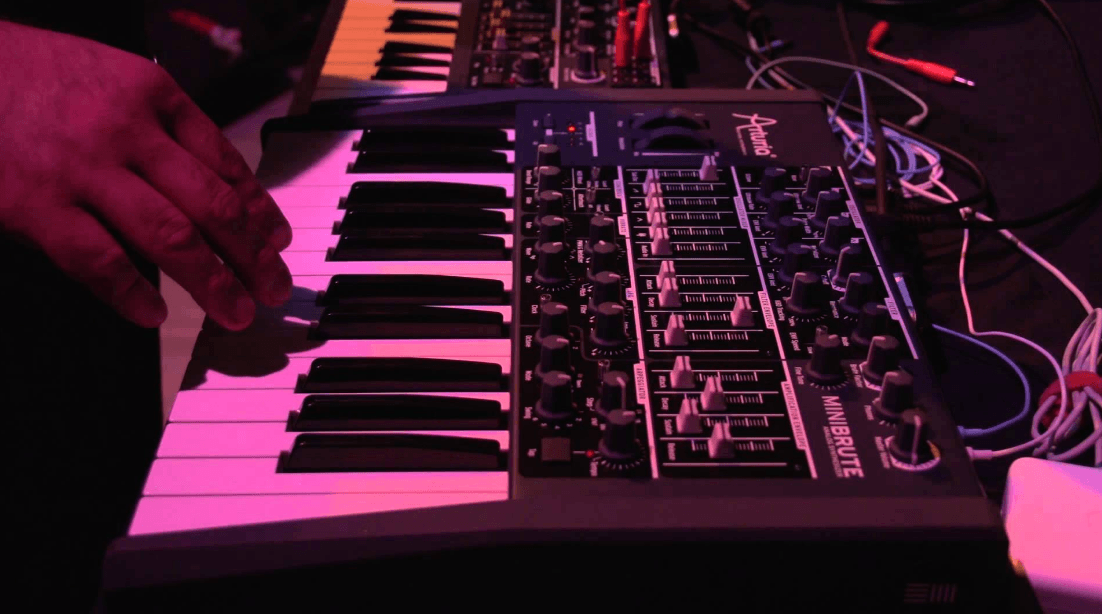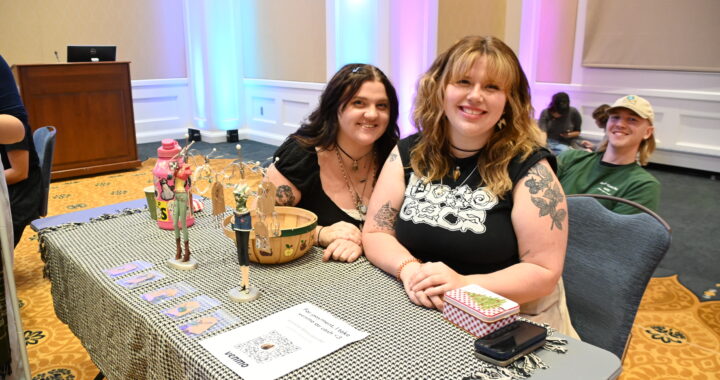Electronic music class showcases the art of masking sounds
6 min read
Pixabay
By TESS OSMER
With frizzy white hair, a plaid short sleeve shirt and what I am pretty sure were cotton sweat- pant-like shorts, Dr. Mark Snyder, assistant professor of music at the University of Mary Washington, welcomed a small audience to the first performance of his Electronic Music class in Pollard Hall, on Tuesday, Oct. 4.
Entitled “Musique Concrète,” the show included 10 songs created by each student of the class. Musique Concrète, although the name of the concert, is actually a genre of music that was created in the 1940s. In 1948, composer Pierre Schaeffer became one of the first to be interested in experimenting with natural sounds. In part with the Studio d’Essai of the French Radio System, Schaeffer began to change the traditions of music.
Students of Snyder’s Electronic Music 370 course learned about Schaeffer’s experiments, and those of other composers. In class and last Tuesday they were able to show the audience their own interpretations of what experimental electronic music is.
At 8 p.m. sharp the lights dimmed, and it was time to begin. The first performance was called “You Missed It,” by Drake Dragone, a sophomore music composition major. It was the only piece that was accompanied by a video display. For all the other pieces the audience sat in complete darkness, honing in on each sound of the performance.
While the image of a field of wheat flicked on the screen Dragone’s piece began. It was as if you were on a porch in the Midwest, wind chimes softly clinking together as you rocked on a wicker chair all afternoon.
The words, “You missed it,” reverberated throughout the hall. As the song progressed the colors in the video began to change, and the wheat swayed in the wind. It began to sound as if someone was playing baseball in the front yard, the ball bouncing about in the speakers.
Interestingly, though I felt transported by this piece, the sounds recorded in order to produce the song were all collected in Dragone’s backyard including: tree branches, his dog, throwing things.
Though Dragone’s piece was light and refreshing, Jordan Vernon’s, a sophomore and double major in Marketing and Digital Studies, piece was complex and emotional. “The Beginning of the End,” Vernon called it, attempted, and succeeded, to capture the struggle of dealing with anxiety.
By using only two sounds, a 3-D printer and the chatter of classmates in a Biology Lab, she was able to mimic what it feels like to be hallow in a world of noise. It was as if there was a vacuum of sound, a heart beating in the background. The voices of her classmates begin to get louder, but it just sounds like incessant buzzing. It really encapsulated how suffocating it feels to experience a panic attack.
Senior computer science major, Elias Ingea, performed his piece next which was entitled, “Ezekiel and His Royal with Cheese.” His piece started out rather slowly, as if the wind were beginning to pick up.
Then, it was as if helicopters had arrived on the scene and everything became increasingly chaotic. Ingea grew up in Beirut, Lebanon and did not move to the United States until he was about 11 years old. The song was meant to capture the feeling of growing up in a war torn country, and it did. It was astounding and touching to hear what he called, “the final attempt at hiding reality and failing.”
On the other side of the spectrum, though not completely, was James Murphy’s piece, “Relent.” Described as a “cyclical alternation between a job fraught with labor and industrial equipment,” Murphy’s piece also included a transition to peace. It opened with almost incoherent mutterings, and extremely industrialized sounds. Straightforward in its theme of the everyday life of an industrial worker, the pace began to slow and make way for peace. This was the “rest and dreams,” section of the piece as Murphy noted in his bio. To me, this really was like an ode to the Blue-Collar American.
Utilizing much tape delay, a staple technique in Musique Concrète, senior and music major Melissa Johnson created her piece, “Hello?” Although it was a song engrossed in the repetition of the word, “Hello,” it was actually very intense and complex and the sounds became distorted and new.
Senior music major Levi Manuel, sixth on the set, performed his thought-provoking number called, “Icebreaker.” This piece, as Manuel described it, was meant to represent his “fascination with the unknown and discomfort.” It’s beginning with these coughing and moaning breaks were uncomfortable but humorous.
My favorite part, however was the inclusion of this beautiful piano solo. It really spoke to me as if there is always beauty in every situation, almost saying, “I’m Levi and the uncomfortable makes me comfortable.” Manuel’s sound source included the coughing and breathing of Ben Jones, passing conversations and piano.
One of the most surprising pieces, as far as the manipulation of sounds, was Michaela Brown’s song, “Did ya get all that?” Using only three sources: laughter/ human speech, the Monroe fountain and stomping inside Trinkle, it was like you had stepped into a Zoo. The laughter and speech seemed to morph into that of a goat and the stomping seemed to echo that of a cow mooing in a field. It was extremely strange and I really liked it.
Bringing out the mechanical undertones of electronic music was Samiullah Shailkh’s piece, “The Vigor of the Ant.” Much like the chain of production between ants and their queen, the song progresses rather quickly. However, it seemed as if the monotonous reality of the life of an ant created a sort of combustion in the song, where the mechanical sounds clashed and became louder. “Bound by devotion and consumed by torment,” as Shailkh puts it.
Second to last on set was senior and computer science major Duncan Beavers. His piece, “Techno Concrète,” was rooted in Beavers musical influence of minimal techno, trance and house music. This piece was mechanical in its production as well, but was a fantastic mixture of both electronic dance and musique concrète. Its modern twist made it easy to move to and a lot of fun to listen to.
Last but not least was Gabe Cowan’s piece, “What a Night.” Cowan used a large sound source which made his piece extremely complex and transported the audience to a wild Saturday night. Meant to mimic the sounds and feelings of alcohol poisoning Cowan’s piece was a little uncomfortable to listen to, but that was also the beauty of it. It sounded as if someone was using a pogo stick in the beginning marking the disillusionment that comes with excessive drinking.
The whole song sounded as if Pollard was underwater. It was one of the most interesting pieces of the night.
As far as the audience was concerned it was brilliant. Rachel Lee, audience member and junior music major, said, “I was impressed, it was almost intimidating learning that most of them were seniors.”
All in all, Snyder’s electronic music class is as inspiring for his students as it was for the audience. As Levi Manuel put it, the class “helped me come out of my shell and forced me to explore my creative possibilities.” Manuel added that, “Mark guides his students through the creative process in such an inspiring and insightful way that really helps you bring your best efforts forward.”
The next show put on by Electronic Music 370 will be the “Electroacoustic Barn Dance,” a three- day festival of electronic music and art, held Nov. 10-12. The barn dance will also include 140 composers and performers from additional institutions in addition to the students of UMW’s electronic music course.
As a previous performer, I know it will be an eye-opening experience and I encourage avid music fans to attend. If anything, there is so much to be learned.


